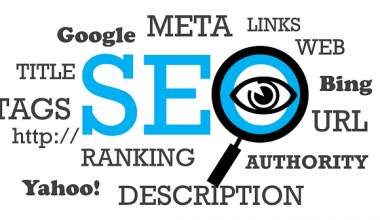When I was starting in PR, I was just fascinated with the idea of gaining new clients and increasing conversion rates and I forgot an essential aspect of contact management: contact database. I had a fantastic pitch all lined up, but when it came time to send it out, I realized I didn’t have the right contacts. Let’s just say, it wasn’t my best moment. But it’s all part of learning, isn’t it?
Contact database management has evolved from manual address books and simple spreadsheets to more advanced and automated software. However, at the heart of this management process, the important element remains the contact data itself. That is why you should learn how to maintain this data and ensure that your database is always functional. Whether you’re a small business owner or just trying to keep track of your personal network, having a centralized database of information can help you stay on top of your relationships and improve your communication with others. Here’s everything you need to know about a contact database, including best practices for building and maintaining one.
Key Takeaways
- A contact database is a digital collection of information about your contacts or customers.
- Having a comprehensive contact database helps you personalize experiences, strenghten relationships, improve your marketing efforts, and improve general productivity.
What is a Contact Database?
A contact database is simply a digital collection of information about your contacts or customers. It’s your go-to resource for connecting with journalists, influencers, colleagues, clients, and stakeholders. This contact database can include their names, email addresses, phone numbers, and other details that are relevant to your business or organization.
Why Do You Need A Contact Database?

Having a comprehensive contact database is an all-in-one package; it helps you streamline communication, build strong relationships, and get your message out to the right people. Ultimately, a contact database helps you:
#1. Personalize Experiences
According to Statista, 62% of customers would deviate from a business if it didn’t offer personalized experiences. Personalization means that you value the customer, and what other way to create this personalization if not with a contact database system. You can locate all the necessary information, including preferences and previous interactions in one place and use this information to personalize your communication. The result? Improved customer loyalty.
#2. Strengthen Relationships

Creating personalized will help strengthen your customer relationships. With a contact database, you can personalize communication, anticipate their needs, and offer helpful solutions where needed. You can also track interactions to ensure that they are receiving a timely follow-up, which in turn helps to build trust and confidence.
#3. Improve your marketing efforts
A comprehensive contact database can help improve the effectiveness of your marketing strategies. You can target certain categories with hyper-personalized content, resulting in more conversions and higher retention. You can also track the effectiveness of your outreach activities. That way, you can understand what works for you and optimize for better results.
#4. Improve Productivity
A contact database will save you the stress of flipping through files to find and access the right contact information. This way, you can focus on carrying out other tasks effectively. Since it’s digital, multiple teams can access it at the same time; they can easily access the information they need without having to waste time searching for it or relying on others to get it. This will improve the general productivity of the organization.
So you’ve seen the need for having a contact database, but how do you create one?
Creating a Customer Database
Now that we’ve established why a contact database is so important, let’s talk about how to build one from scratch.
#1. Identify your target audience
The first step is to define your target audience. Who are you trying to reach? Journalists, bloggers, industry influencers, potential clients? Once you’ve been able to identify your target audience, you can start sourcing contacts.
#2. Source for Contacts
There are many ways to find contacts for your database. You can start by checking online directories, attending networking events, or even leveraging social media platforms like LinkedIn and Twitter. The key is to have a wide reach and be proactive in your search.
#3. Organize your Contacts
Once you’ve gathered your contacts, it’s time to organize them in a way that makes sense to you. Collect their data and categorize them by industry, geographic location, or level of influence. Whatever method you choose, just make sure it’s intuitive and easy to access.
Building and Maintaining Your Contact Database
It’s one thing to create a contact database, but maintaining it is an entirely different thing. Follow these steps to build and maintain your business contact database:
#1. Regularly update contact information
People change their information from time to time, and if care is not taken, you might end up having a database clogged and clustered with inaccurate and outdated information. That’s why you should regularly update and verify the contact information in your database. I once made this mistake – creating a wonderful pitch and sending it to an old email address only to get a bounce-back.
#2. Segment Contacts
Segmenting your contacts allows you to tailor your communications to specific audiences. For example, you would want to send different pitches to journalists than you would to clients. By segmenting your contacts with filters, labels, tags, or lists, you can ensure that your messages are relevant and meet the right target.
#3. Use contact management software
Contact management software can be a game-changer when managing your contact database. These tools not only help you organize your contacts but also track interactions, set reminders, and analyze engagement metrics. It’s like having a personal assistant for your PR efforts. After considering some factors like the level of automation, ease of use, integration options and quality of customer support, here are some contact management software that I can recommend:
- HubSpot
- BIGContacts
- Nextiva Customer Relationship Suite
- Jotform
- ActiveCampaign
- Freshworks
- Moosend
- Keap
#4. Monitor Your Effectiveness
Use reporting and analytics to evaluate the effectiveness of your contact database management. By monitoring key performance indicators like the number of new contacts added, the number of interactions with existing contacts, and the success rate of communication efforts, you can identify areas that need improvement and adjust your strategy accordingly.
#5. Ensure Security
You must constantly update the database and ensure that it is free of any security threats. Take adequate measures to maintain data integrity. You can also use an advanced tool that lets you create custom user roles and permissions to ensure complete security of sensitive contact information.
Nurturing Relationships Through Your Contact Database
Remember that part of the reason you’re creating a contact database is to strengthen relationships with your clients. So, how do you nurture these relationships?
#1. Personalizing communication
Trust me, people can differentiate a broadcast message from a personalized message. You’ll get a much better result when you personalize your communications based on insights from your contact database. Mention recent articles they’ve written or projects they’ve worked on – anything at all to show that you know something about them.
#2. Engage with your contacts
Don’t just reach out to your contacts when you need something – engage with them regularly, share their content, and offer help whenever you can. Remember, it’s all about building trust and rapport.
#3. Track interactions
Keep track of your interactions with contacts using your CRM software. Note when you last reached out, what you talked about, and any follow-up actions. This will help you stay organized and ensure that no contact falls through the cracks.
Common Problems in Managing Contact Databases
Managing a contact database isn’t always easy. Personally, I’ve encountered some challenges that arose from simple mistakes and mismanagement. You might also encounter these challenges when building your contact database, that’s why you should understand how to deal with them as they arise. Some of these challenges are:
#1. Missing key information
With more data sources than ever to collect and store information, you can still struggle with gaps in consumer data. You can miss some important information about your customers, which may stem from challenges connecting their online and offline behaviors, or devices making it difficult to match back browse behavior.
#2. Outdated information
According to Dun and Bradstreets, 120 businesses change their address, 20 CEOs leave their jobs, and 75 phone numbers change every 30 minutes. This can result in brands having outdated information on customers almost all the time. That is why you should regularly review and update your contact data to ensure you’re up to date.
#3. Incorrect or unverified data
Unlike before, data is now collected from many self-reported sources, increasing the likelihood of errors. Data is growing at a really fast pace, which complicates matters for the marketer. The average organization estimates that 22% of all its contact data is inaccurate in some way. And 42% of brands say that inaccurate contact data is the biggest barrier to multichannel marketing5.
#4. Lack of insight
The increased volume of information and the variety of data sources make it increasingly difficult to match and integrate records from many sources in order to offer accurate, clean data. As a result, attempts to analyze customer data in order to construct retention models, personas, or other strategy-defining insights that assist you in identifying your best customers may be useless.
#5. Inability to find prospects
Incomplete and inaccurate data reduces your chances of understanding your customers, and if you can’t identify or understand your customers, you can hardly find prospects for what you want.
How To Overcome These Challenges?
Every challenge has its solution. Here are some steps you can take to ensure your contact database is effective and up-to-date
#1. Use a central storage
Strive to create a single view of your customers and prospects, wherever they are – at home, at work, on their cell phone or computer, online, offline, etc. Have processes in place that will help you resolve duplicate or incomplete records for example:
- Have a unique identifier for each entity in your database.
- Establish a defined method for identifying and resolving contradictory and out-of-date information. For example, you could set up alerts for duplicate records or records with conflicting information, such as customers who have one account linked to a work email and another to a personal email.
#2. Commit to validation best practices
You can achieve a level of success by making quality control a priority. For optimal results, try validating records as they come in, and use real-time validation tools to ensure you receive accurate information.
#3. Have dedicated resources for data management
It is difficult to keep a clean database without clearly defined ownership. Dedicated resources (and funding) for data management can help keep things in order. If your brand’s data quality requires an upgrade, you can always seek assistance from data hygiene professionals to get back on track.
#4. Implement technology to ease the load
CRM (Customer Relationship Management), CDP (Customer Data Platform), DMP (Data Management Platform) are all database technology solutions that can help you manage your data. Whichever one you choose, do your due diligence to ensure that it aligns with your business needs.
#5. Develop a customer data integration (CDI) framework
A CDI framework helps you to extract, cleanse, add, store, access, and gain insights from customer data.
Whether your brand develops this framework on its own, or uses an external provider, having a plan for your customer data helps to establish and maintain the right environment to provide you with a 360-degree view of the customer.
What Is B2B Contact Data?
B2B contact data refers to information about businesses and their representatives, including names, titles, email addresses, and phone numbers, used for marketing, sales, and networking purposes.
Read Also: PR for B2B Companies: Tailoring Your Approach to Reach Decision-Makers
Is Business Contact Data Personal Data?
Yes, business contact data is considered personal data if it relates to an identified or identifiable individual, such as their work email, phone number, or job title.
In Conclusion,
A contact database is a very essential tool for every business owner, You can improve the efficiency and productivity of your business by keeping track of customer information and contacts. Also, having organized contact will help your business to have greater control over the quality of your customer service and communication with existing and potential clients. Building a solid contact database, however, is not an easy process – it requires a lot of time, resources, and dedication, but it’s well worth it. With the steps and procedures I’ve outlined in this article, you’ll be well on your way to attaining success.
Related Articles
- Building an Effective Media List: How To Research & Target the Right Journalists for Your Story
- How to Write News Release: Free Tips and Examples
- Spam Backlinks: The Silent Saboteurs of Your Website’s Credibility
- Monitoring Online Content: How To Do This In 5 Steps






